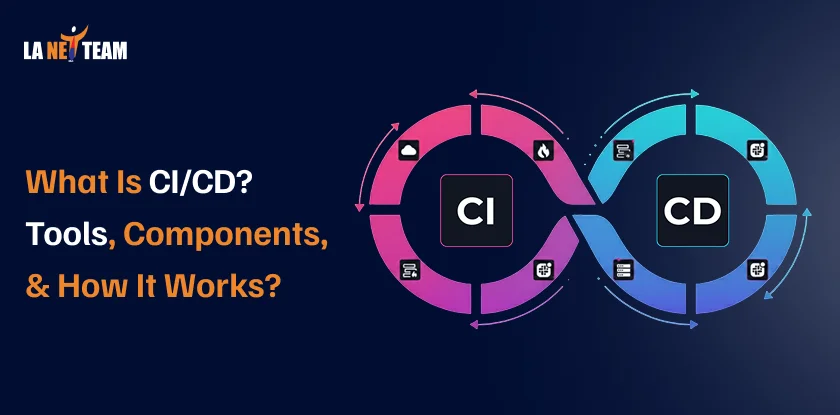When you order food online, you expect it to arrive hot and on time.
Software works the same way. People want apps that update quickly, fix bugs fast, and work smoothly.
But the real problem: if every update will take weeks of testing and manual deployment. All work will slowly get delayed, and as a result, users will lose their patience.
This is where CI/CD (Continuous Integration & Continuous Delivery) helps.
CI/CD is a modern software development process where code changes are automatically tested, merged, and deployed.
So let’s discover it in detail.
What is CI/CD? (Continuous Integration and Delivery)
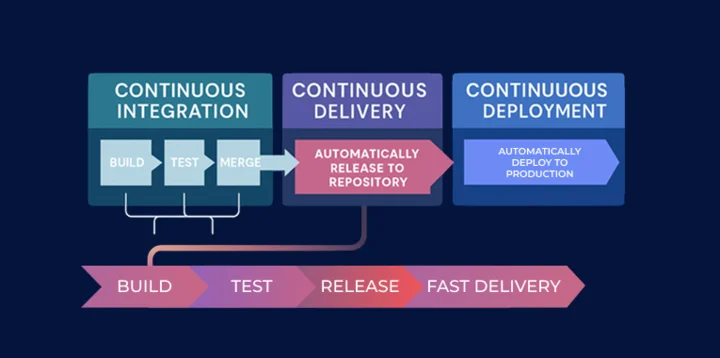
Continuous Integration is about developers continuously adding (or merging) their code into one shared place. Every time they do this, the system automatically builds and tests the code.
The Goal is simple: To catch the problem early. If something breaks after the new code is added, the automated test will help you show right away.
Continuous Delivery is the next step after Continuous Integration. Not only does the code get tested, but it is always ready to be shared with users.
With the automated release process, you can send updates to users in just one click.
What is Continuous Deployment?
Continuous Deployment is like full automation of delivery. And the changes that are passed from the test are automatically released to the users.
This makes feedback super fast. But there is only one case that can stop the release is a failed test.
How CI/CD Works In DevOps?
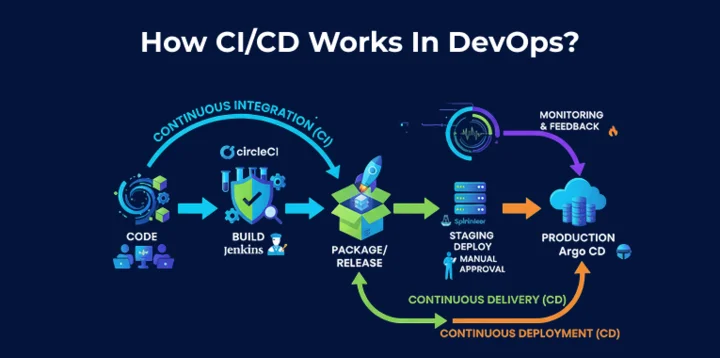
CI/CD in DevOps is like an assembly line for software. Below, in very simple words, it is explained how it works.
Step 1- Write code
This is the first step where developers write small chunks of code and push them to a shared place (repo).
Step 2- Auto check
The next step involves an auto check. Every time code is added, tools build it and run tests to see if it works fine.
Step 3- Fix fast
If something breaks, developers get to know right away, and then they fix it before it becomes a big problem.
Step 4- Get ready to release
Followingly, if the test gets clear, the code is then moved forward and packaged for release.
Step 5- Go live
Next comes Continuous Delivery or Deployment. Over here, the code is either made ready for release with one click (Delivery) or pushed live automatically (Deployment).
Step 6- Keep Watch
Lastly, this step states to track performance by using monitoring tools so that issues can be caught and fixed quickly.
Top Common CI/CD Tools Every DevOps Team Should Use
Knowing the tools will make it easier for you to build, test, and release software without messing things up. Below are some tools that focus on integration, while others help in testing and deployment.
Jenkins is the most popular open source automation server. It can help you in handling almost any kind of CI/CD work, making it a hub for building, testing, and deploying code.
Other Useful CI/CD tools:
- Concourse: Open source for CI/CD pipelines
- GoCD: Help in visualizing and managing CI/CD workflows.
- Screwdriver: For continuous delivery
- Spinnaker: CD tool for multi-cloud environments.
What is CI/CD Pipeline?
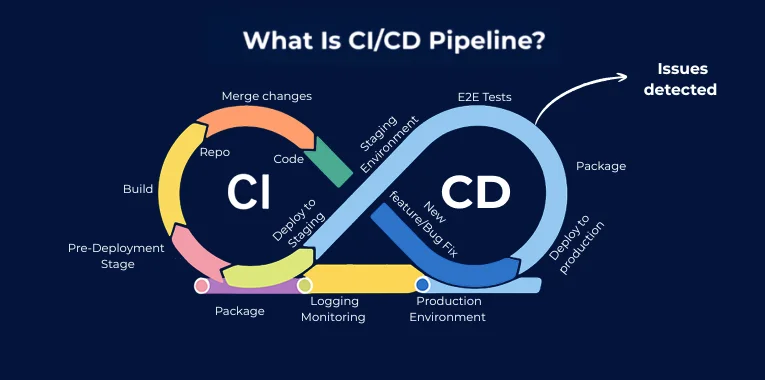
A CI/CD pipeline is basically the step-by-step process that takes code from being written till it goes live for users.
CI/CD is just an idea of making changes in code and getting updates out fast. Whereas a CI/CD pipeline is how it actually happens automatically, making sure the code is built, tested, and delivered safely and quickly.
Components of CI/CD Pipeline
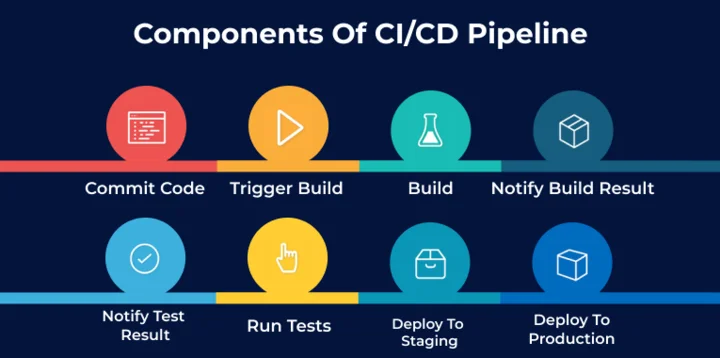
Knowing about the components will give you an idea of how software moves from code to production safely and quickly.
- Commit code: Developers write code and save it to a version control system like Git. This step helps in starting the CI/CD process and keeping track of all changes.
- Trigger build: Once the new code is detected in the repository, the system automatically starts building it.
- Build: The code is turned into a runnable form, like a program, application, or Docker image. This step checks if the code complies correctly and makes sure all pieces fit together.
- Notify build result: After building, the system immediately notifies the team whether it worked or failed. These notifications are being sent via email, Slack, Teams, or dashboards.
- Run tests: The built code is run on automated tests to ensure that it performs well. These tests include: small unit tests, larger integration tests, or complete end-to-end tests.
By doing testing, you can ensure that new code doesn’t break old functionality and meets quality standards. - Notify test result: Once the testing is done, teams themselves can see the results. If tests fail, developers can fix issues immediately. This fast feedback prevents problems from reaching production.
- Deploy to staging: If tests get passed, then the codes are moved to the staging environment. Staging is a practice version of the real system. Over here, the final checks are done to ensure everything works correctly before going live.
Deployment tools such as Ansible, Chef, Puppet, Kubernetes, or cloud services help automate this process. - Deploy to production: After the staging approval, the code is then released to the live environment for users.
Safety measures can be employed to deploy through blue-green deployment, canary releases, or rolling updates to minimize risks.
Wrapping Up
You no longer need to use messy updates. With CI/CD, you can now make your software updates faster and smoother, along with keeping them reliable.
Analyze your current workflow position and problem.
Then make small changes such as:
- Automate builds and tests
- Use the right tools
- Get feedback quickly
By doing so, you can make huge improvements in making your code safer, updating releases faster, which will give you happy users.
